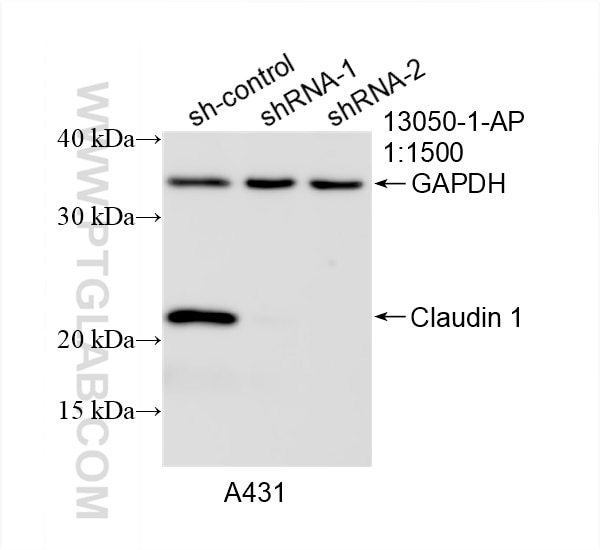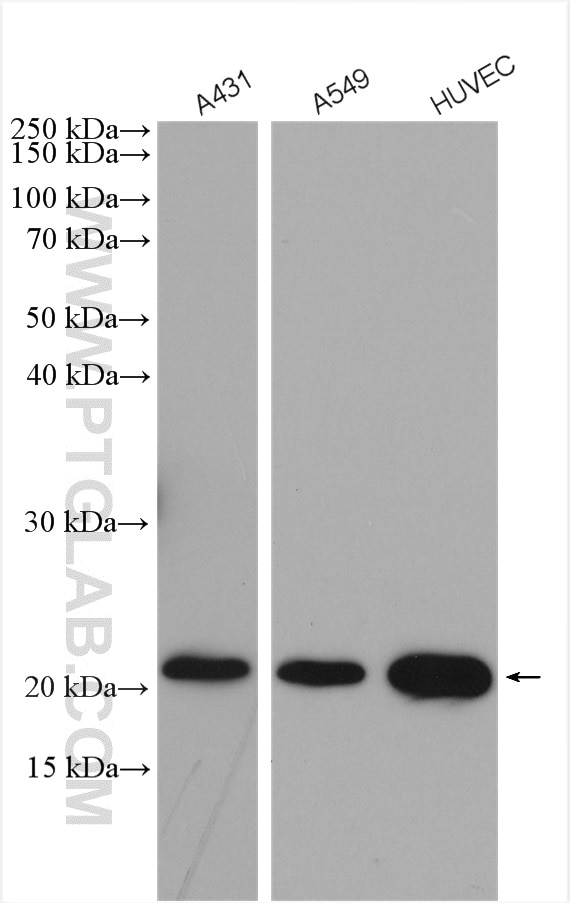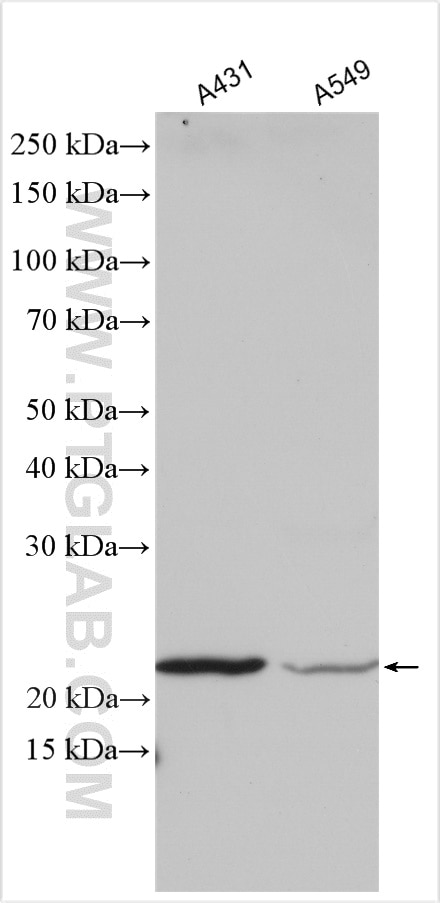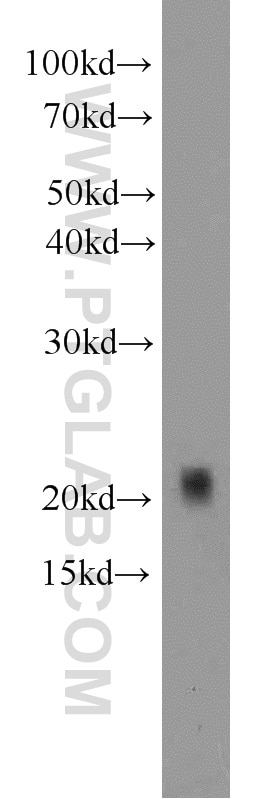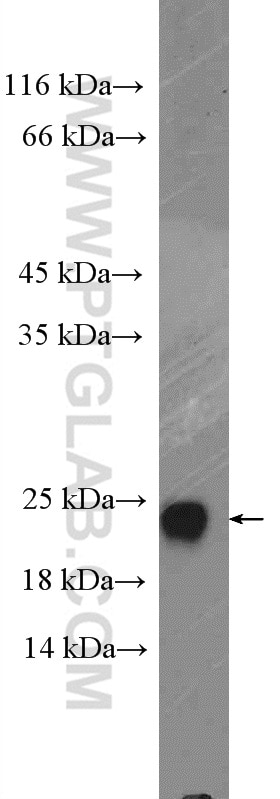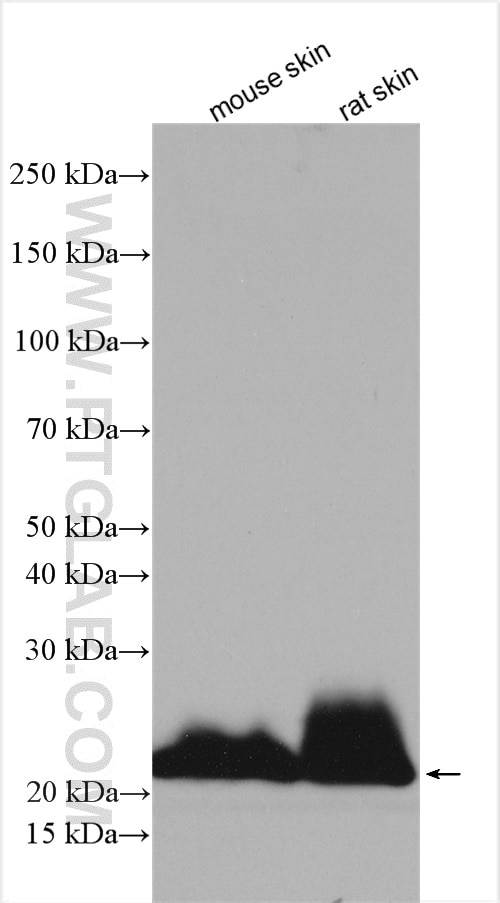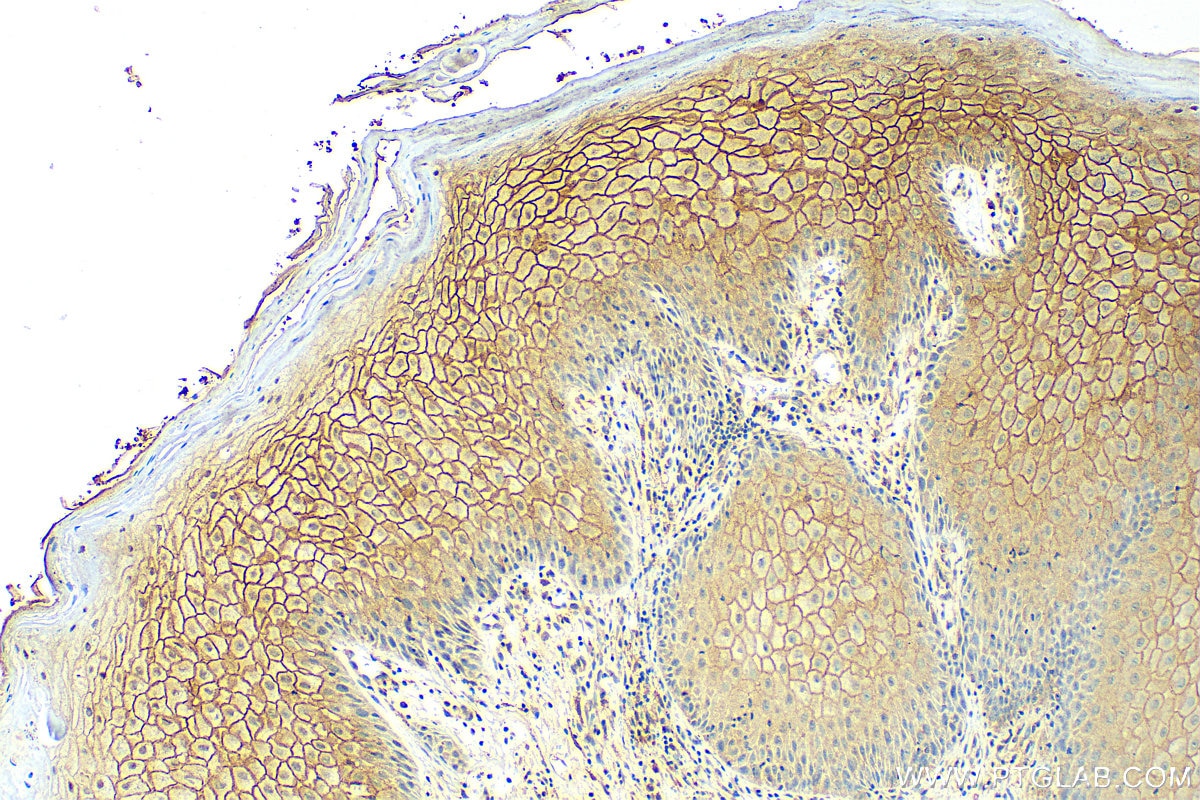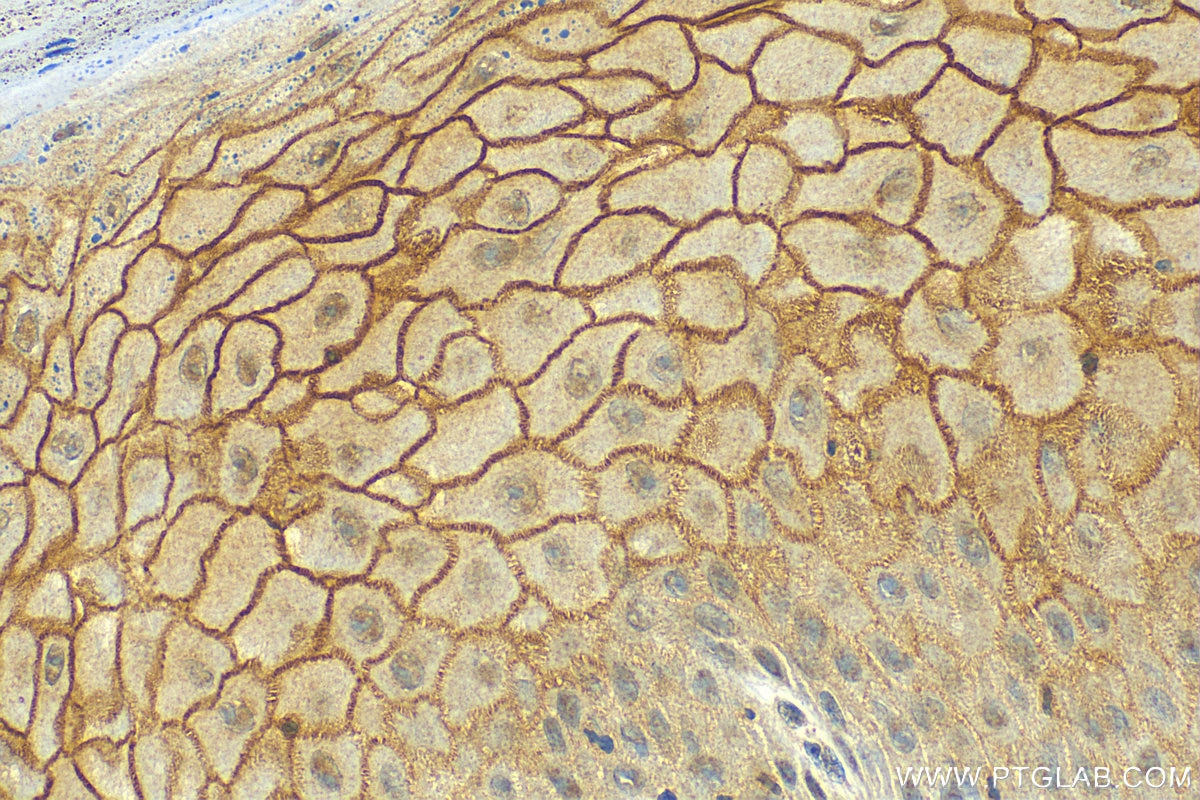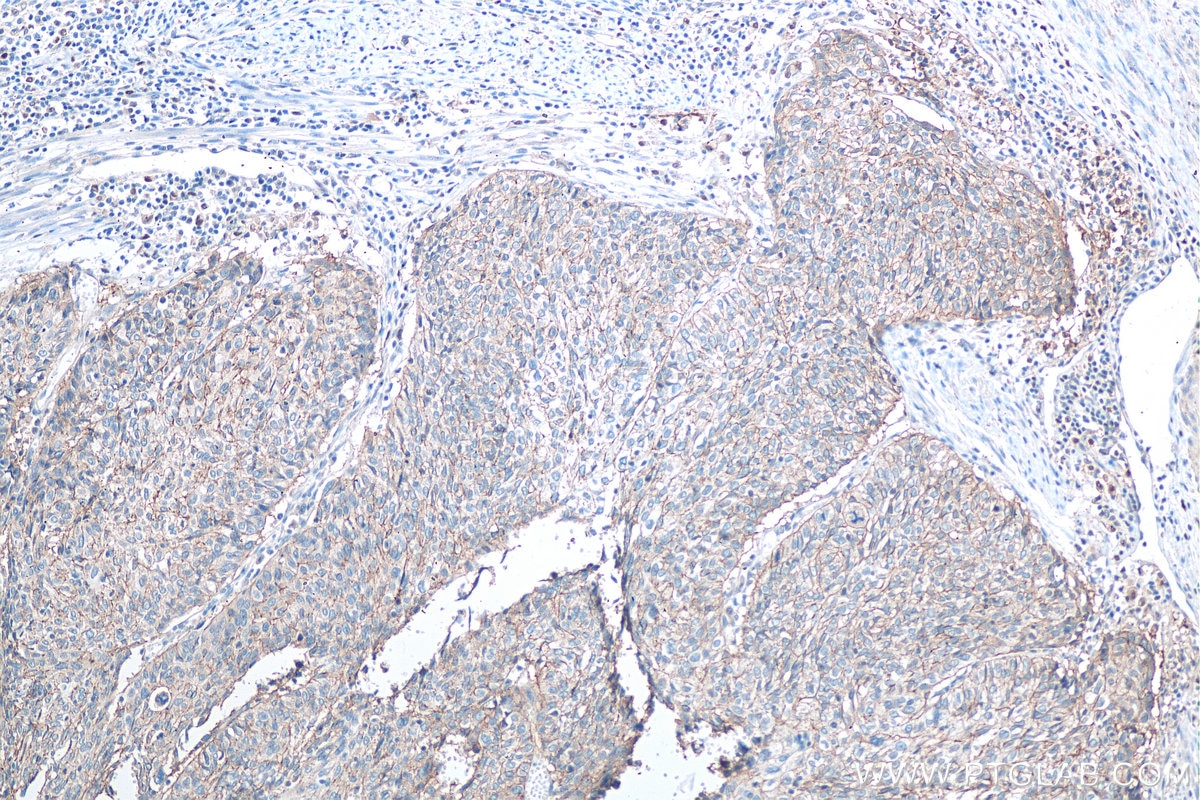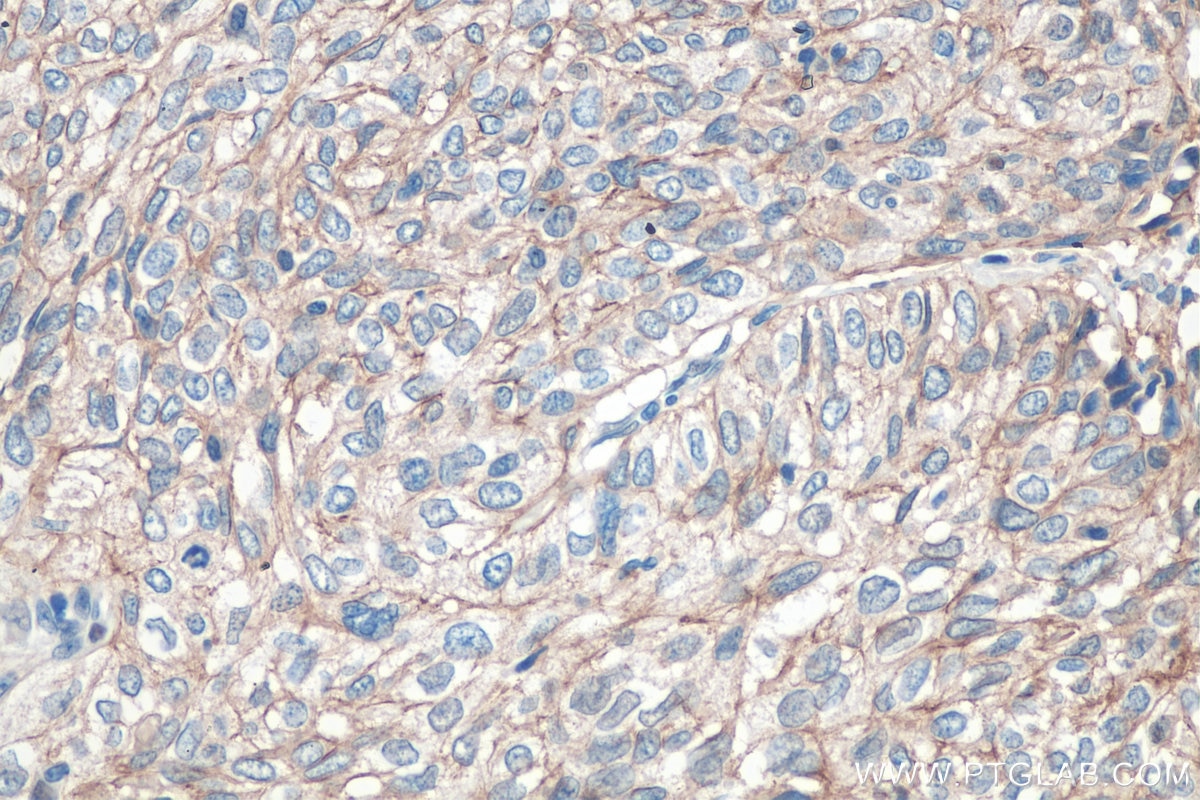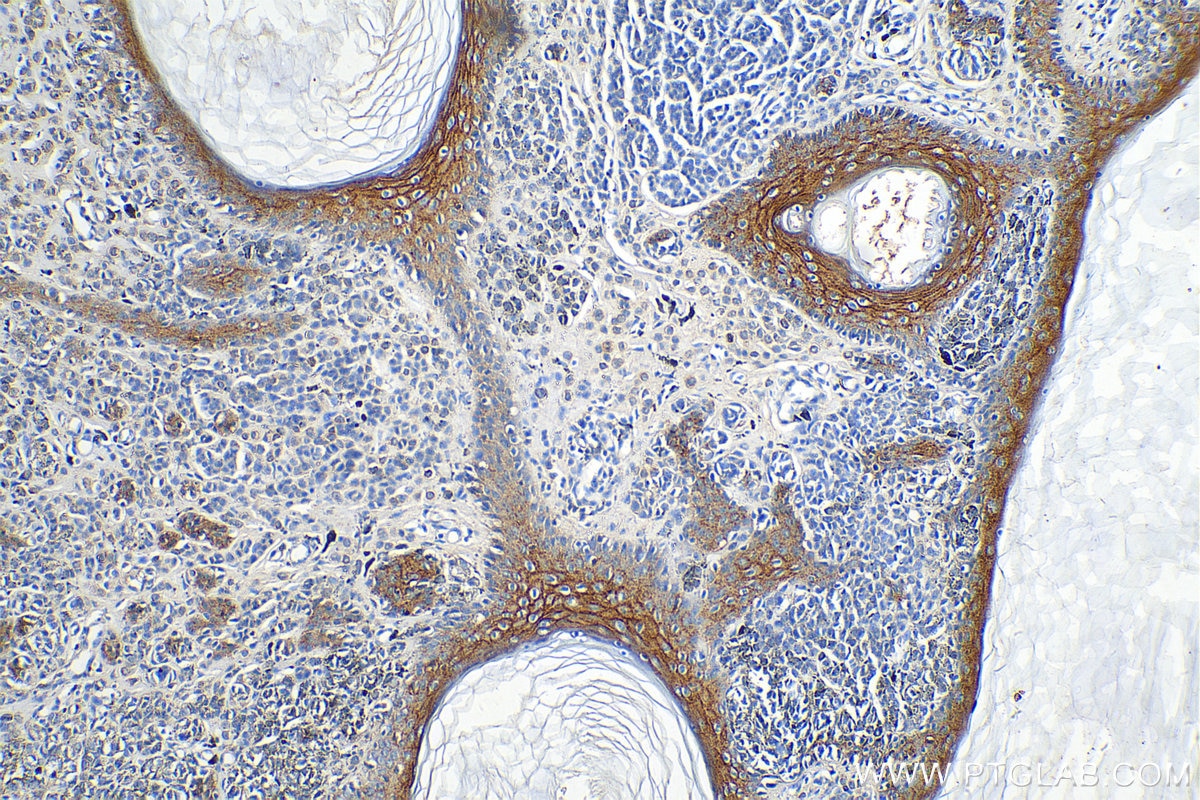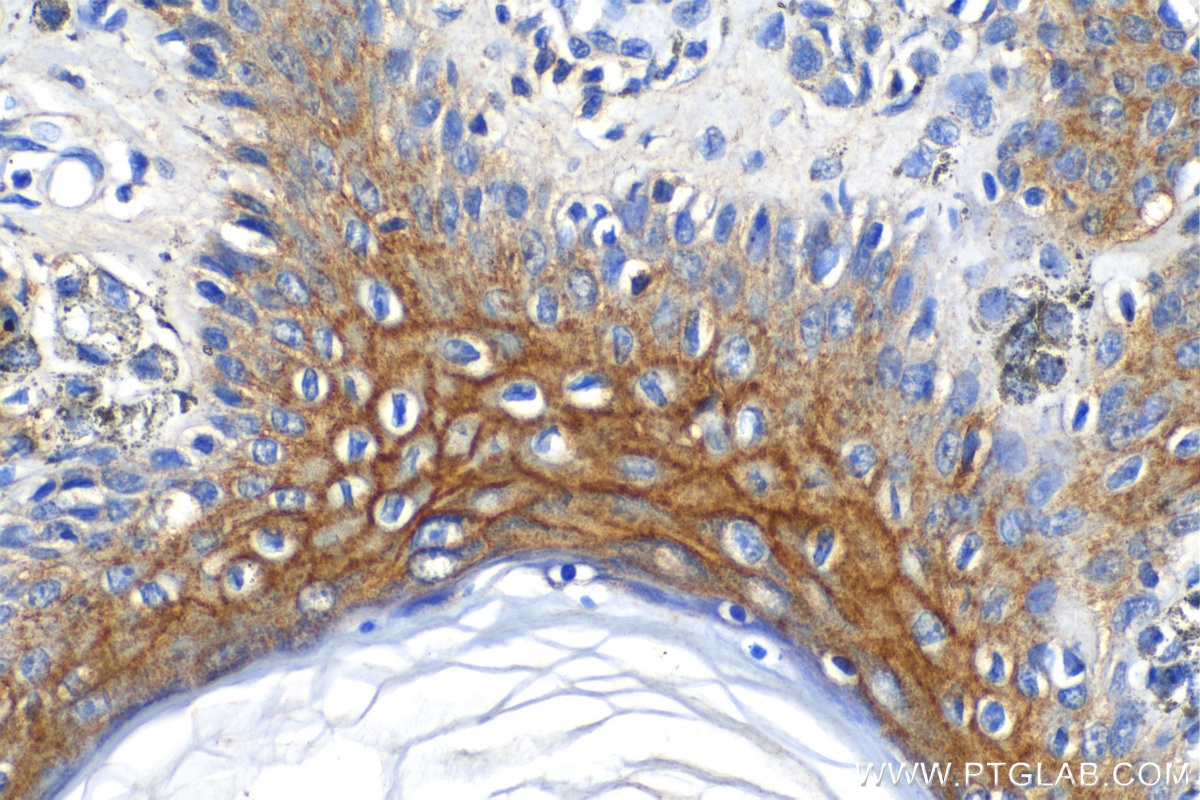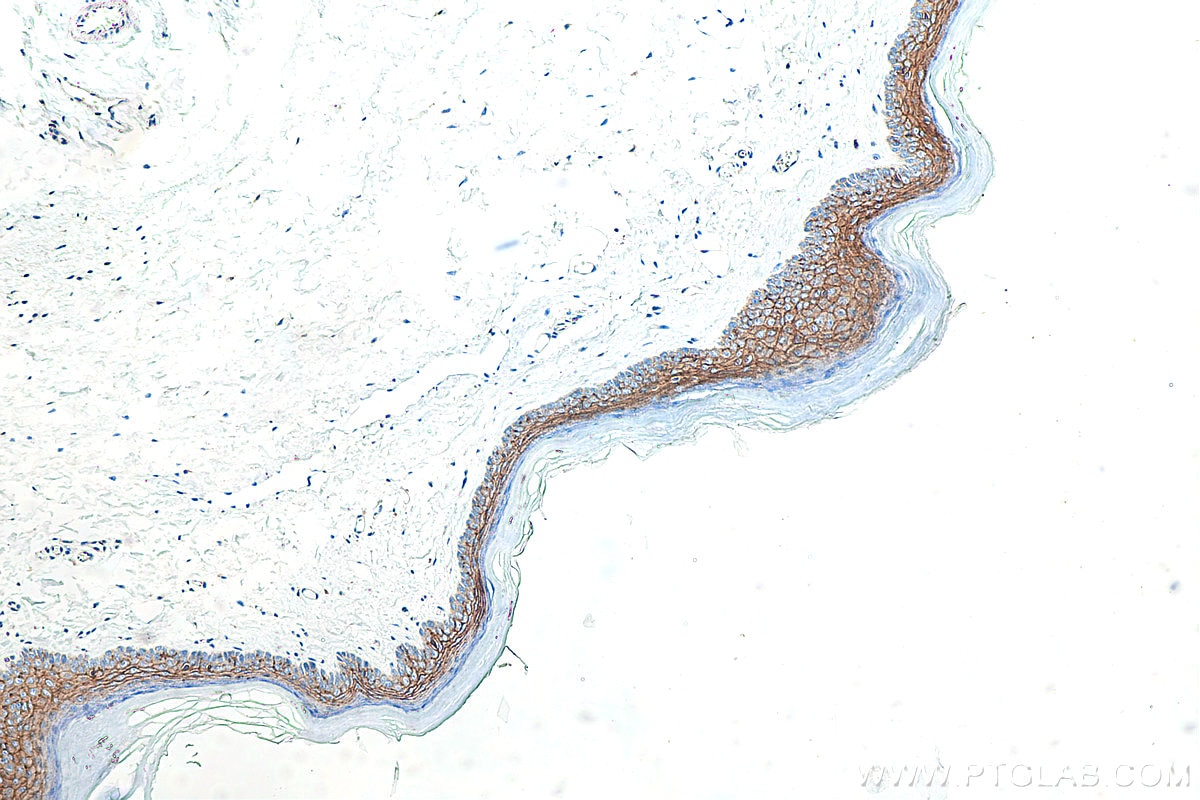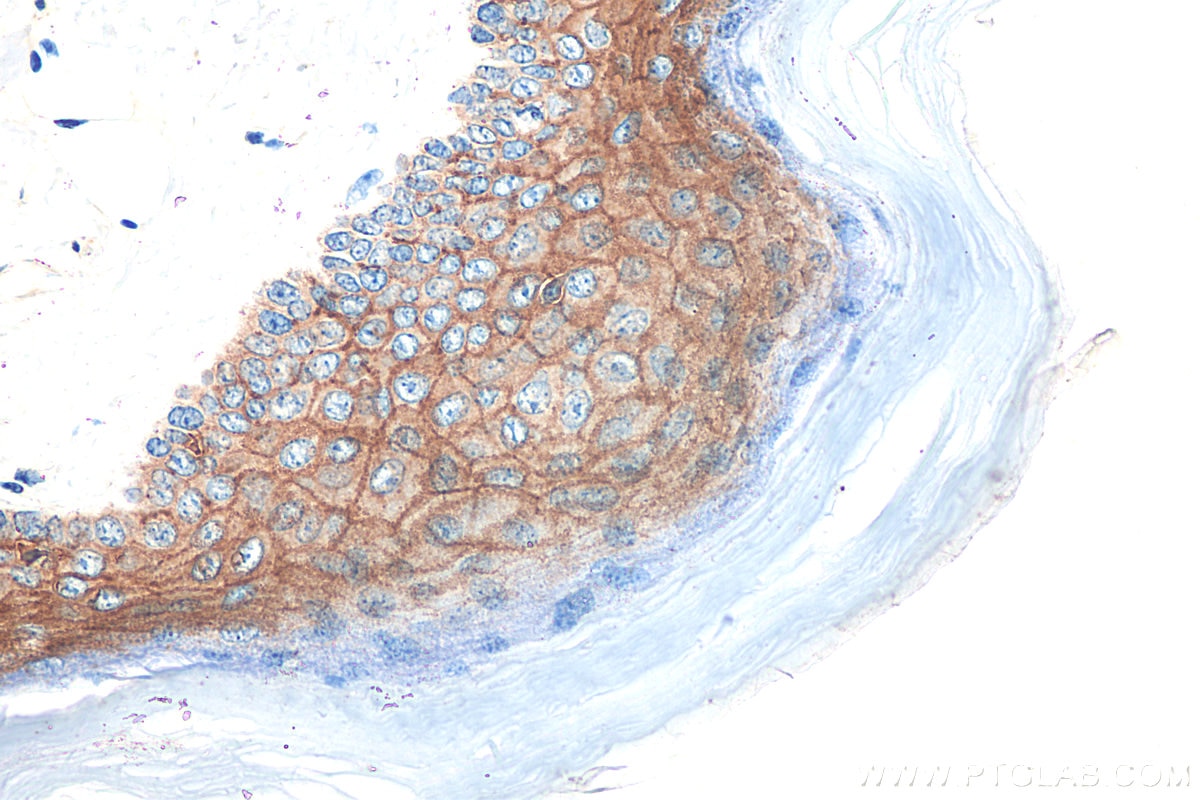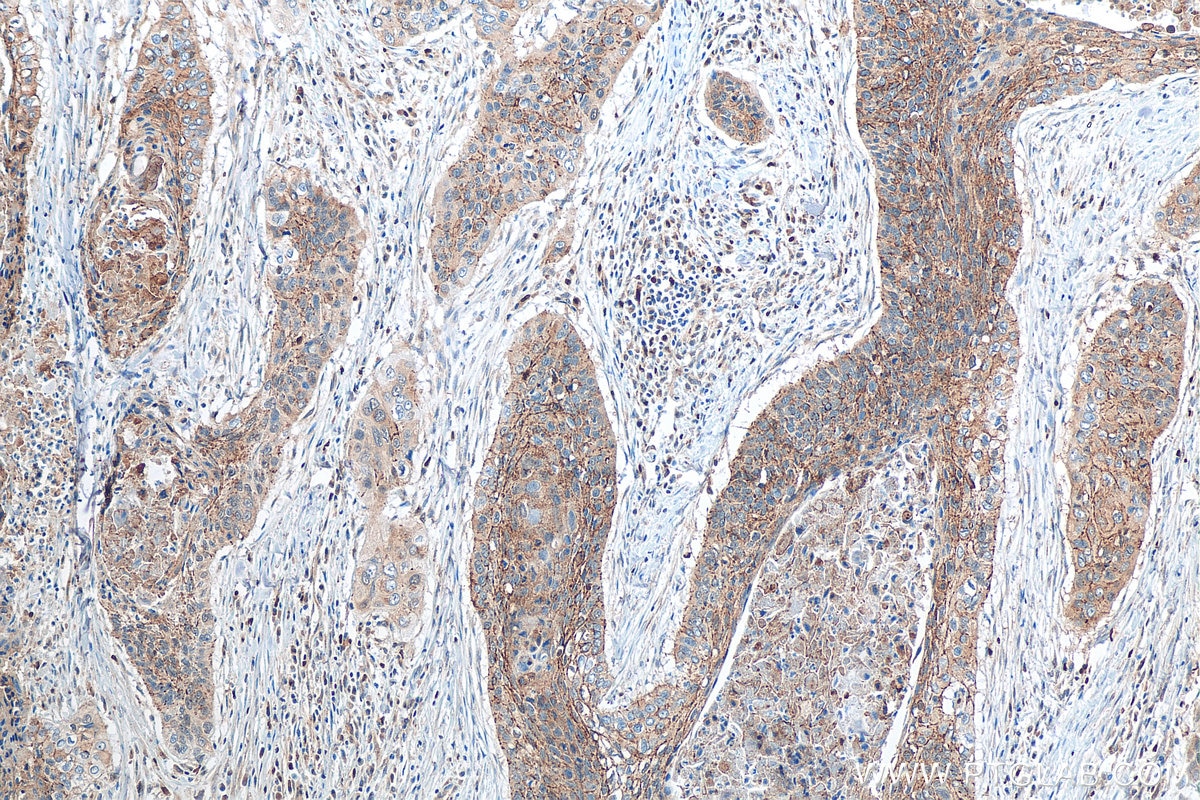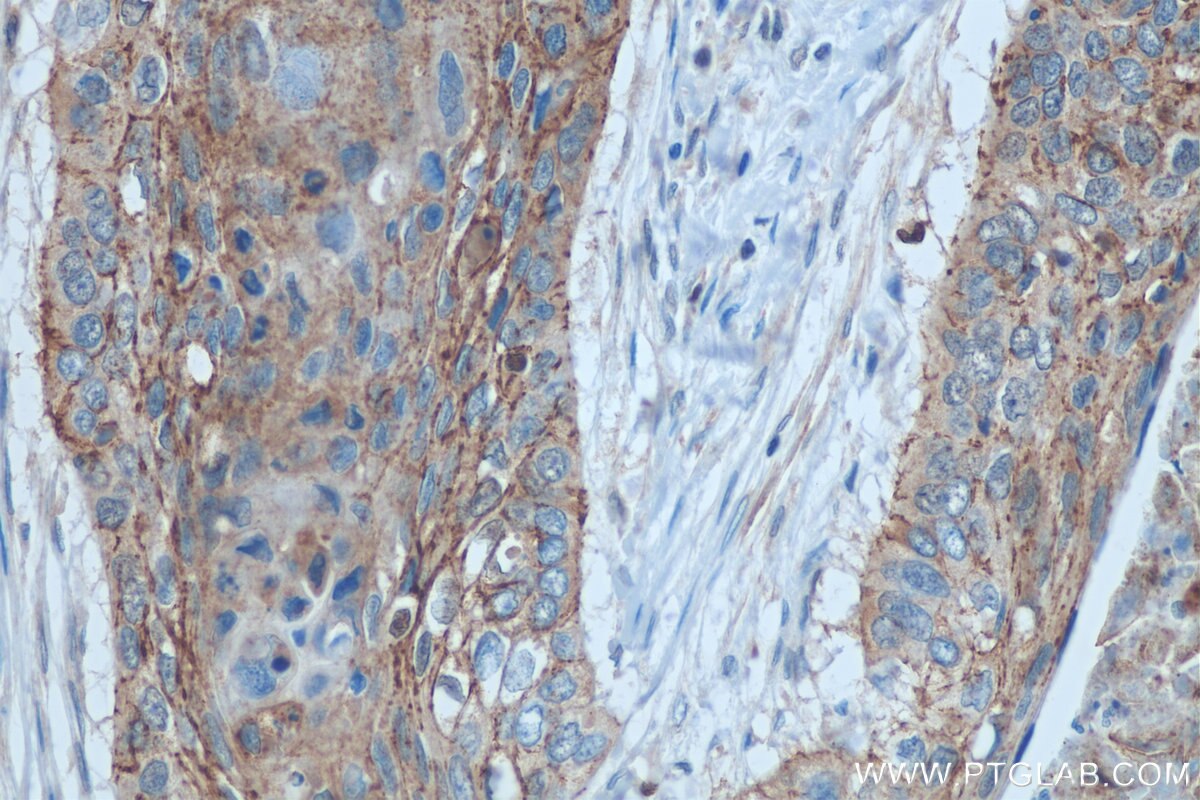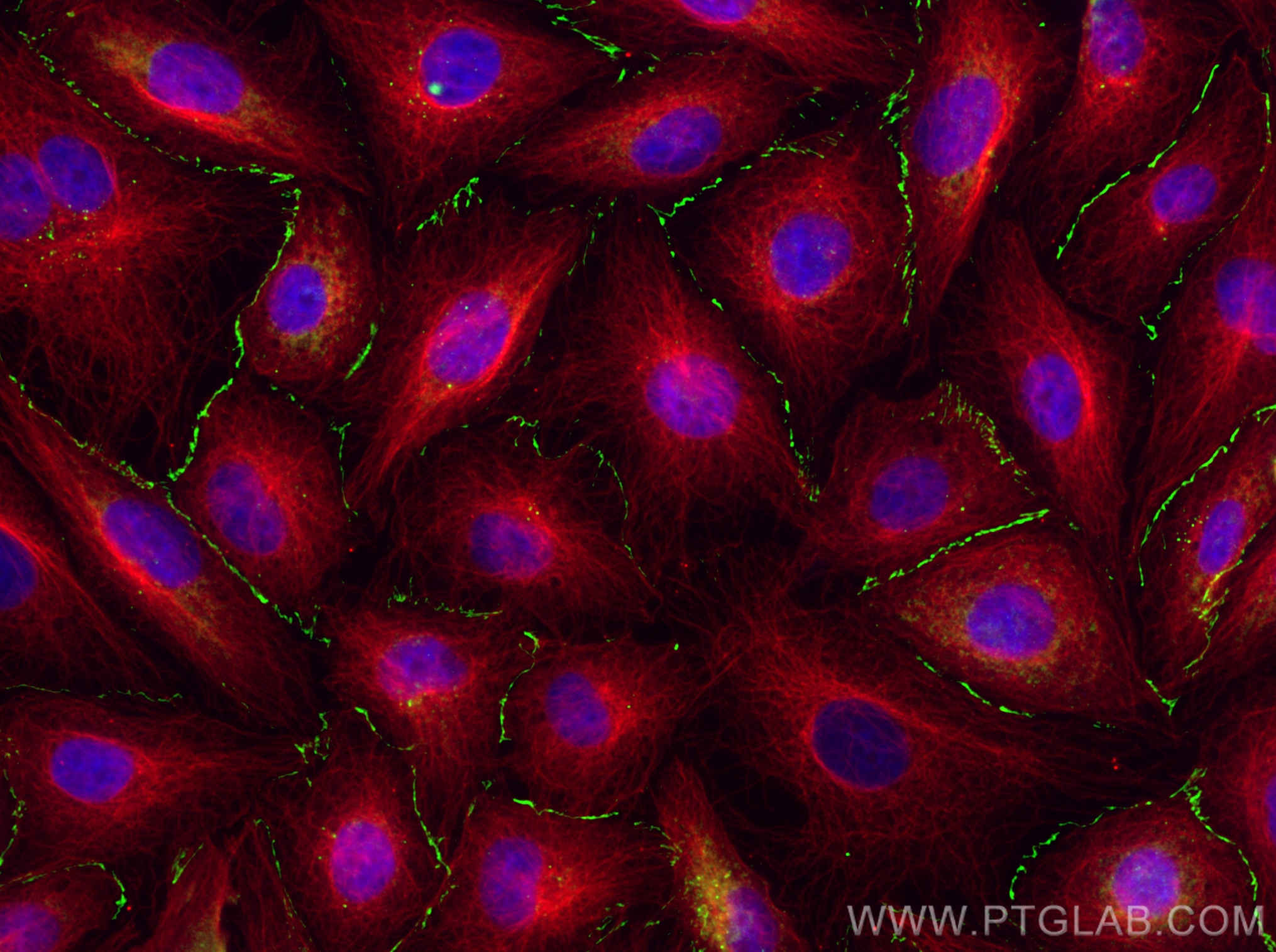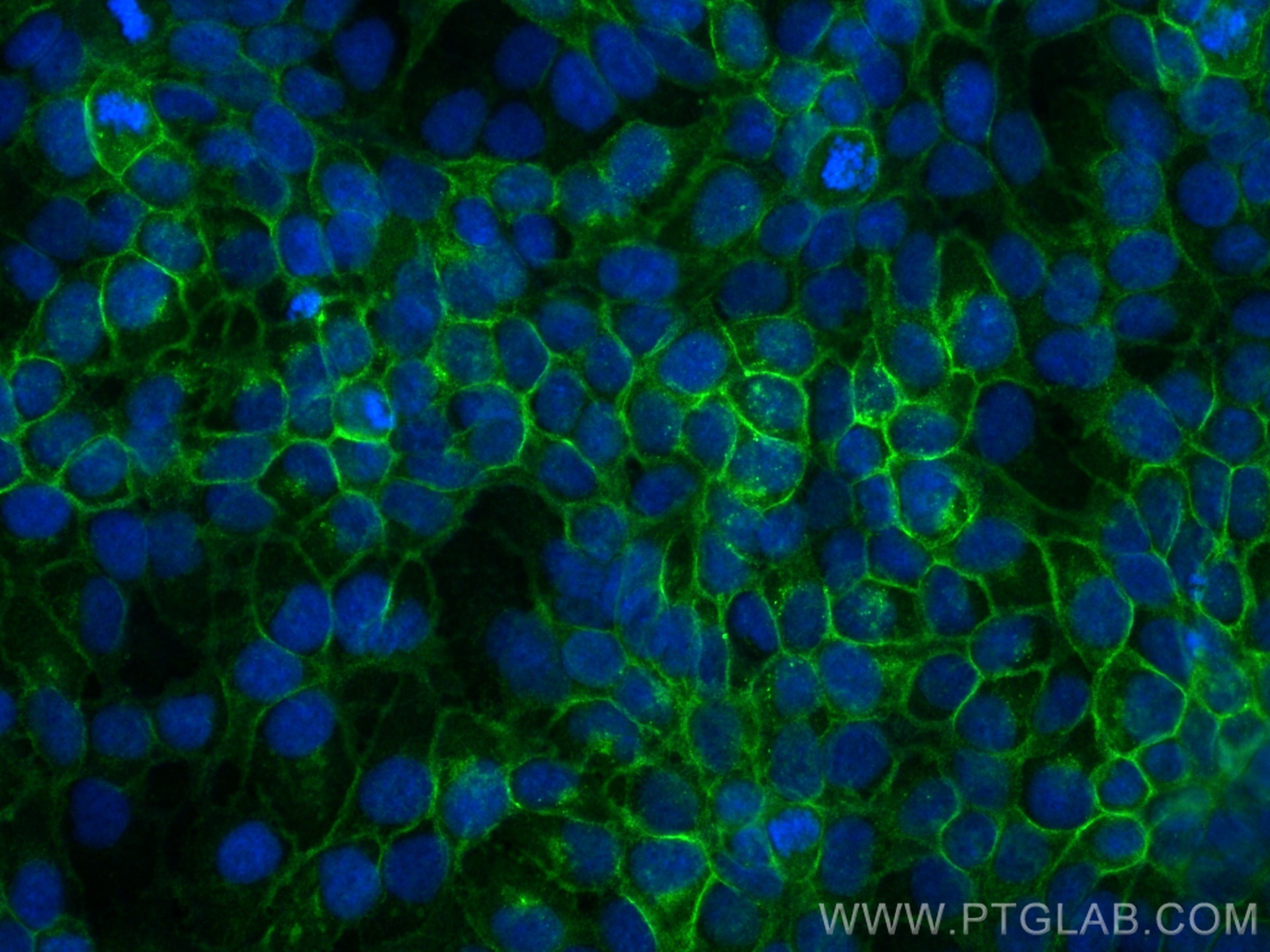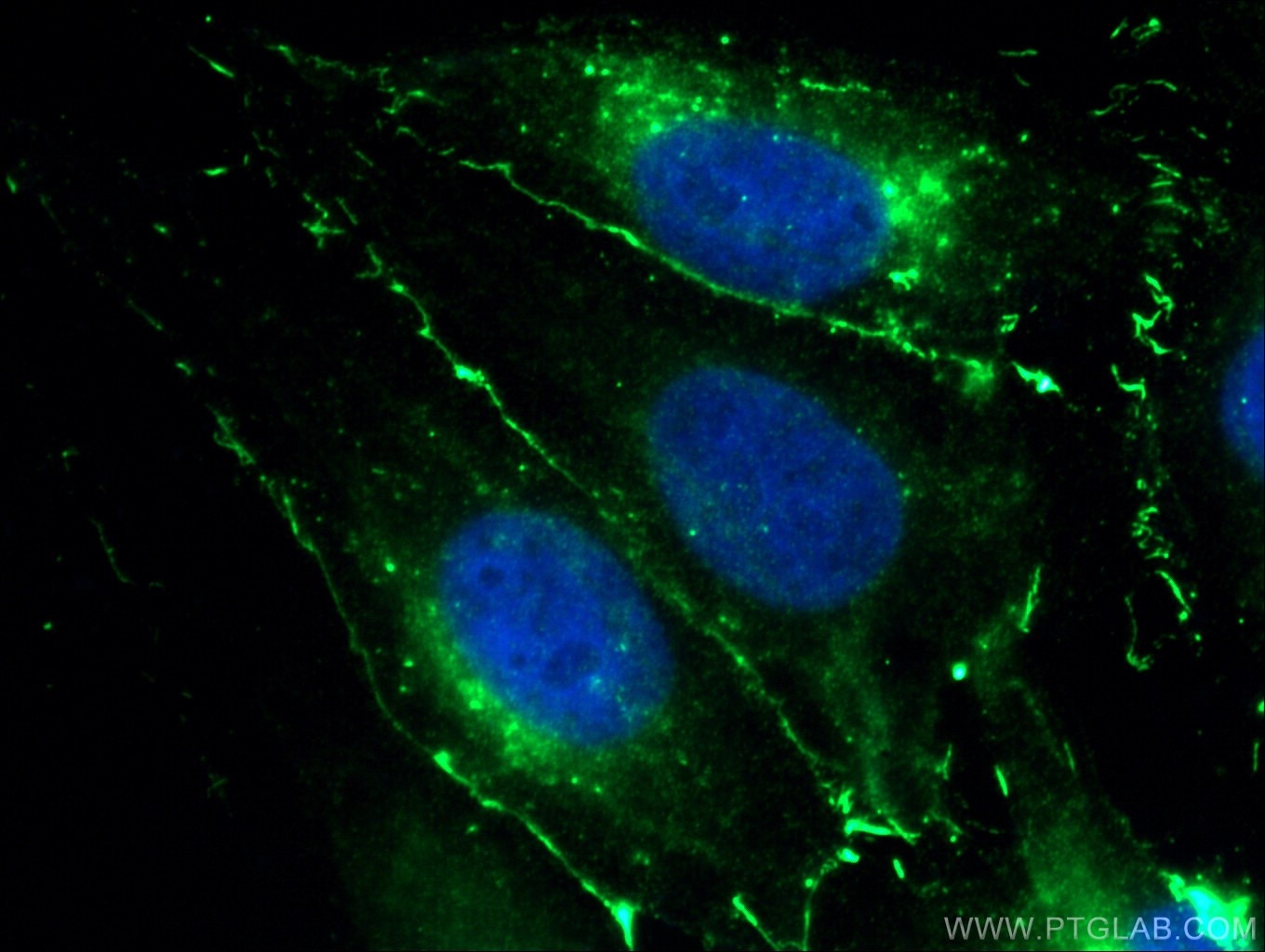- Phare
- Validé par KD/KO
Anticorps Polyclonal de lapin anti-Claudin 1
Claudin 1 Polyclonal Antibody for WB, IHC, IF/ICC, ELISA
Hôte / Isotype
Lapin / IgG
Réactivité testée
canin, Humain, rat, souris et plus (4)
Applications
WB, IHC, IF/ICC, ELISA
Conjugaison
Non conjugué
N° de cat : 13050-1-AP
Synonymes
Galerie de données de validation
Applications testées
| Résultats positifs en WB | cellules A431, cellules A549, cellules HUVEC, tissu cutané de rat, tissu cutané de souris, tissu de thymus de souris, tissu hépatique de souris |
| Résultats positifs en IHC | tissu de cancer du col de l'utérus humain, tissu cutané de souris, tissu de cancer de la peau humain, tissu de cancer de l'œsophage humain, tissu de mélanome malin humain il est suggéré de démasquer l'antigène avec un tampon de TE buffer pH 9.0; (*) À défaut, 'le démasquage de l'antigène peut être 'effectué avec un tampon citrate pH 6,0. |
| Résultats positifs en IF/ICC | cellules HUVEC, cellules HaCaT, cellules MDCK |
Dilution recommandée
| Application | Dilution |
|---|---|
| Western Blot (WB) | WB : 1:1000-1:8000 |
| Immunohistochimie (IHC) | IHC : 1:50-1:500 |
| Immunofluorescence (IF)/ICC | IF/ICC : 1:1000-1:4000 |
| It is recommended that this reagent should be titrated in each testing system to obtain optimal results. | |
| Sample-dependent, check data in validation data gallery | |
Applications publiées
| KD/KO | See 2 publications below |
| WB | See 265 publications below |
| IHC | See 55 publications below |
| IF | See 71 publications below |
Informations sur le produit
13050-1-AP cible Claudin 1 dans les applications de WB, IHC, IF/ICC, ELISA et montre une réactivité avec des échantillons canin, Humain, rat, souris
| Réactivité | canin, Humain, rat, souris |
| Réactivité citée | rat, bovin, canin, Chèvre, Humain, porc, poulet, souris |
| Hôte / Isotype | Lapin / IgG |
| Clonalité | Polyclonal |
| Type | Anticorps |
| Immunogène | Claudin 1 Protéine recombinante Ag3713 |
| Nom complet | claudin 1 |
| Masse moléculaire calculée | 211 aa, 23 kDa |
| Poids moléculaire observé | 20-23 kDa |
| Numéro d’acquisition GenBank | BC012471 |
| Symbole du gène | Claudin 1 |
| Identification du gène (NCBI) | 9076 |
| Conjugaison | Non conjugué |
| Forme | Liquide |
| Méthode de purification | Purification par affinité contre l'antigène |
| Tampon de stockage | PBS with 0.02% sodium azide and 50% glycerol |
| Conditions de stockage | Stocker à -20°C. Stable pendant un an après l'expédition. L'aliquotage n'est pas nécessaire pour le stockage à -20oC Les 20ul contiennent 0,1% de BSA. |
Informations générales
Claudins are a family of proteins that are the most important components of the tight junctions, where they establish the paracellular barrier that controls the flow of molecules in the intercellular space between the cells of an epithelium. 23 claudins have been identified. They are small (20-27 kilodalton (kDa)) proteins with similar structures. They have four transmembrane domains, with the N-terminus and the C-terminus in the cytoplasm. Claudin-1 is an integral membrane protein expressed primarily in keratinocytes and normal mammary epithelial cells. Claudin 1 forms tight junctions with other claudin proteins and plays an important role in the intestinal epithelial barrier.
Protocole
| Product Specific Protocols | |
|---|---|
| WB protocol for Claudin 1 antibody 13050-1-AP | Download protocol |
| IHC protocol for Claudin 1 antibody 13050-1-AP | Download protocol |
| IF protocol for Claudin 1 antibody 13050-1-AP | Download protocol |
| Standard Protocols | |
|---|---|
| Click here to view our Standard Protocols |
Publications
| Species | Application | Title |
|---|---|---|
Cell Host Microbe Gut microbiome dysbiosis contributes to abdominal aortic aneurysm by promoting neutrophil extracellular trap formation | ||
Microbiome Dietary emulsifier carboxymethylcellulose-induced gut dysbiosis and SCFA reduction aggravate acute pancreatitis through classical monocyte activation | ||
J Nanobiotechnology Orally biomimetic metal-phenolic nanozyme with quadruple safeguards for intestinal homeostasis to ameliorate ulcerative colitis | ||
Clin Cancer Res ZIP4 Promotes Pancreatic Cancer Progression by Repressing ZO-1 and claudin-1 through a ZEB1-Dependent Transcriptional Mechanism. | ||
EMBO Rep O-glycan initiation directs distinct biological pathways and controls epithelial differentiation. | ||
Int J Biol Macromol Glucose-modified BSA/procyanidin C1 NPs penetrate the blood-brain barrier and alleviate neuroinflammation in Alzheimer's disease models |
Avis
The reviews below have been submitted by verified Proteintech customers who received an incentive for providing their feedback.
FH James (Verified Customer) (01-06-2022) | Works good. Nice image
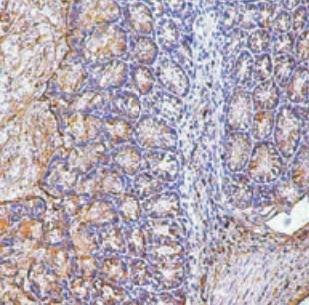 |
FH Joshua (Verified Customer) (07-27-2019) | Cells differentiated at air-liquid interface. Cells fixed in 4% paraformaldehyde and stained at 4C overnight. Moderate staining with background. Staining is a mix of junctional (bright) and cytosolic (dim).
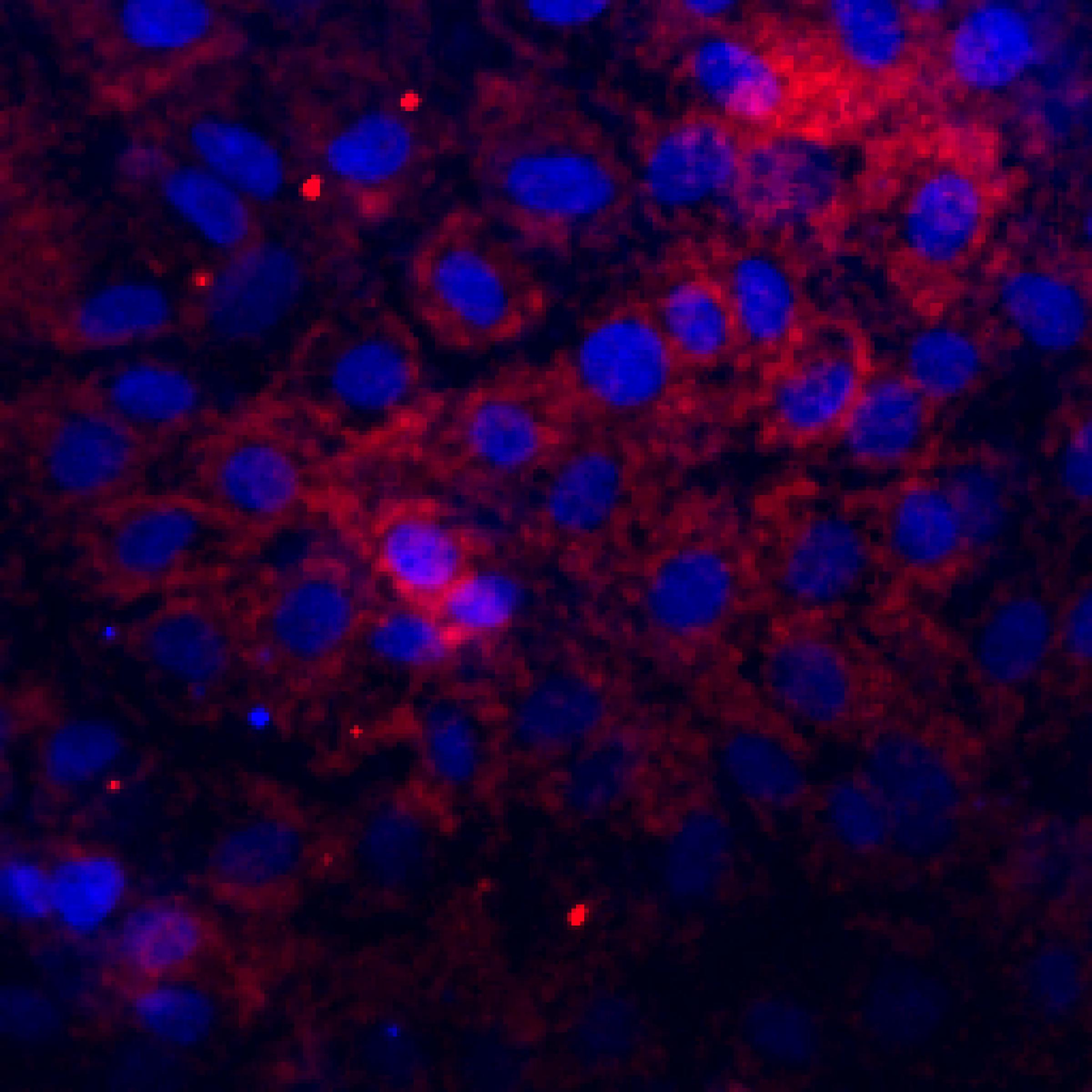 |
